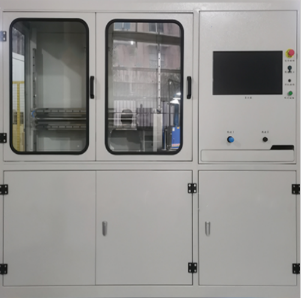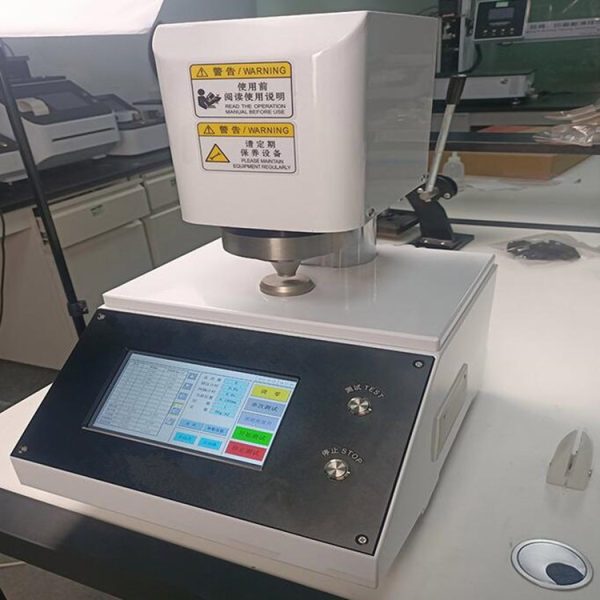Interpretation of geotextile testing projects and standards
Blog 3 6 月, 2025
With the geotextile can participate in the project is more and more large, the major workers on the geotextile requirements are also more and more high, so the geotextile in all aspects of the performance had to be improved to adapt to the market demand, in line with the use of engineering standards. So that nowadays people people on geotextile testing has become quite important.
Geotextile, also known as geotextile. It is a permeable geosynthetic material made of synthetic fibers by needling or weaving. Geotextile is a new type of construction material. According to the manufacturing method is divided into: spun geotextile and non-woven geotextile two types. In the project can play the role of filtration, drainage, isolation, protection, strengthening and so on.
I. Geotextile testing scope:
Filter geotextile, impermeable geotextile, thermal insulation geotextile, textile geotextile, non-textile geotextile, geomembrane, composite geotextile
Geotextile series: high-strength polypropylene geotextile, polypropylene geotextile, filament yarn sintered geotextile, braided geotextile, staple fiber geotextile, woven geotextile, plastic woven fabric, filament geotextile
Geomembrane series: filament composite membrane, EVA geomembrane, HDPE geomembrane, LDPE geomembrane, environmental protection HDPE geomembrane
Second, the geotextile industry test standards:
GB/T3923.1-1997 textile fabric tensile properties of Part l: Determination of breaking strength and elongation at break strip method
GB/T4667-1995 Determination of the width of woven fabrics
GB/ T13760-1992 Sampling and sample preparation of geotextiles
GB/T13761-1992 Determination of thickness of geotextiles
GB/T13762-1992 Determination of quality of geotextiles per unit area
GB/T13763- 1992 Test method for trapezoidal tearing strength of geotextile
GB/T14799-1993 Method for determination of aperture of geotextile by dry sieve method
GB/T14800-1993 Test method for top breaking strength of geotextile
GB/T15788-1995 Test method for tensile test of geotextile with wide stripes Sample method
GB/T15789-1995 Determination of water permeability of geotextiles
GB/T16989-1995 Determination of breaking strength of geotextile joints/seams
GB/T17630-1998 Dynamic perforation test of geotextiles and related products Falling Cone Method
GB/T17631-1998 Dynamic perforation test of geotextiles and related products GB/ T17631-1998 Test method for oxidation resistance of geotextiles and related products
GB/T17632-1998 Test method for acid and alkali resistance of geotextiles and related products
GB/T17633-1998 Determination of in-plane water flow of geotextiles and related products Determination of water flow in the plane of geotextiles and related products
GB/T17634-1998 Determination of effective pore size of geotextiles and related products by wet sieve method
GB/T17635.1-1998 Determination of friction characteristics of geotextiles and related products Part 1: Direct shear test
GB/T17636-1998 Determination of abrasion resistance of geotextiles and related products by sand cloth/slider method
GB/T17637-1998 Determination of tensile creep and tensile creep rupture properties of geotextiles and related products
III. Geotextiles standardized specific test methods
1. Geotextile width determination: refer to GB/T4667 implementation.
2. Geotextile thickness: GB/T13761 implementation.
Determination of quality per unit area: according to GB/T13762.
3. Determination of breaking strength and elongation of geotextile: according to GB/T15788. internal factory inspection can refer to GB/T3923.1.
4. Tearing strength: according to GB/T13763.
5.CBR top breaking strength: GB/T14800.
6. Determination of equivalent pore size: according to GB/T14799. wet sieve method pore size according to GB/T17634.
7. Determination of vertical permeability coefficient: respectively, according to GB/T15789 and GB/T13761 determination of water permeability and thickness at 2kPa, in-plane water flow according to GB/T17633 determination.
8. Dynamic perforation (falling cone) determination: according to GB/T17630.
9. Determination of coefficient of friction: GB/T17635.1 implementation.
10. Determination of anti-wear performance: GB/T17636 implementation.
11. Determination of antioxidant performance: according to GB/T17631 implementation.
12. Determination of acid and alkali resistance performance: according to GB/T17632 implementation.
13. Determination of puncture strength: reference to GB/T14800. but the technical conditions: top rod (flat head) diameter 8mm, clamping the sample ring inner diameter of 45mM, the test speed of 300mm/min.
14. Creep performance determination: according to GB/T17637 implementation.
15. Determination of joint/seam breaking strength: GB/T16989 implementation.
16. Determination of ultraviolet resistance: reference to ISO4892.2 determination, usually determined after the light intensity retention rate, the test time can be selected according to need, such as 150. 300. 500h.
Third, the purchase of geotextile 3 points of attention
In the purchase of geotextiles, in addition to working on specifications, in other areas can not be sloppy, mainly the following 3 points of attention.
1. in the choice of geotextile, if you can choose a thick type of geotextile do not thin type, because compared to thin geotextile, thick geotextile not only tensile strength and pressure resistance performance is good, in the use of the process can also play a very good role in the barrier and protection.
2. as far as possible to choose the national standard geotextile, because non-standard geotextile in all aspects of performance are not compared to the national standard geotextile, especially in the strength of them and puncture resistance and durability.
3. as far as possible, choose wide enough geotextile, because this can reduce the number of geotextile welding or stitching in the construction process, can greatly improve the construction progress.


